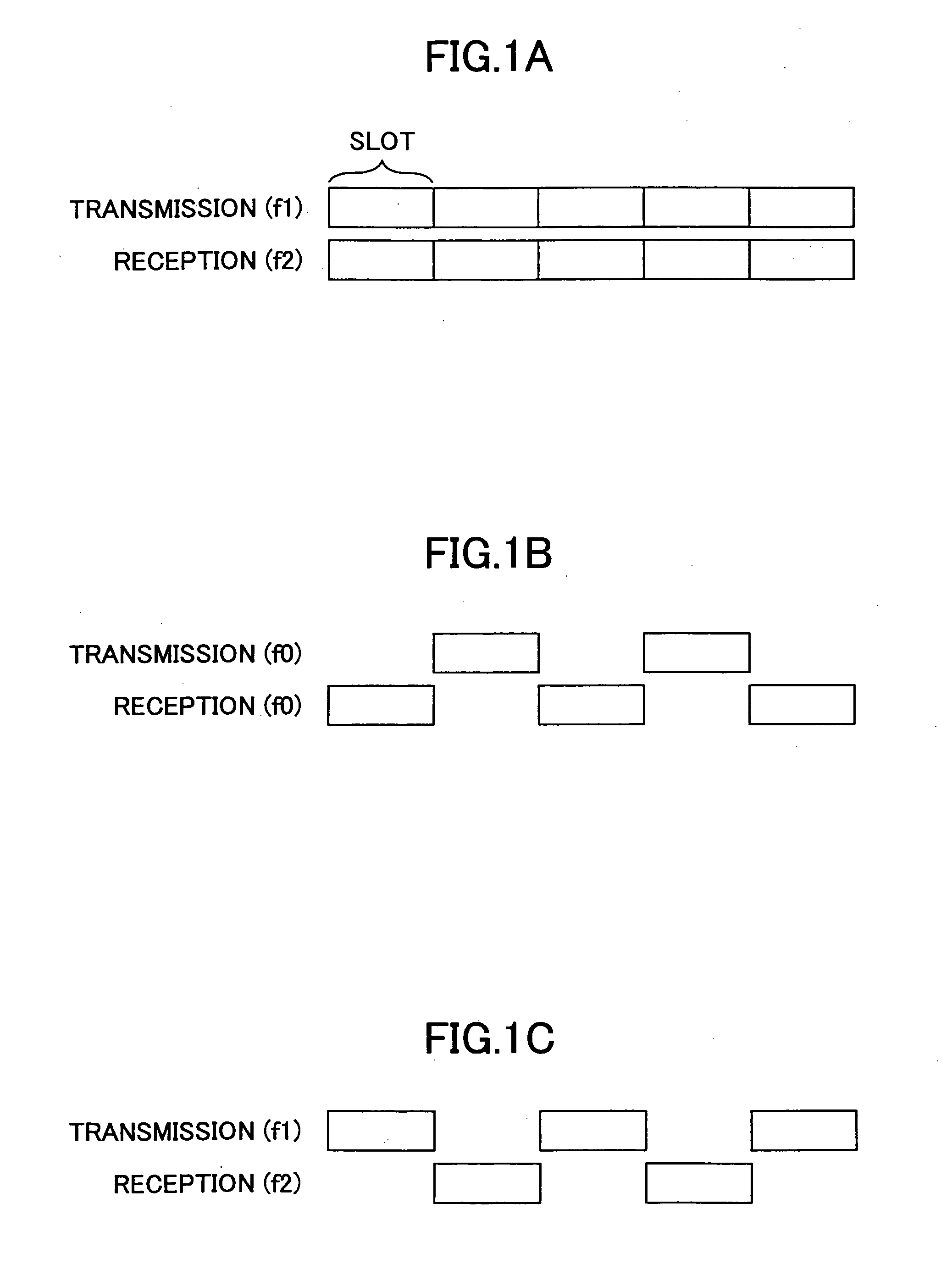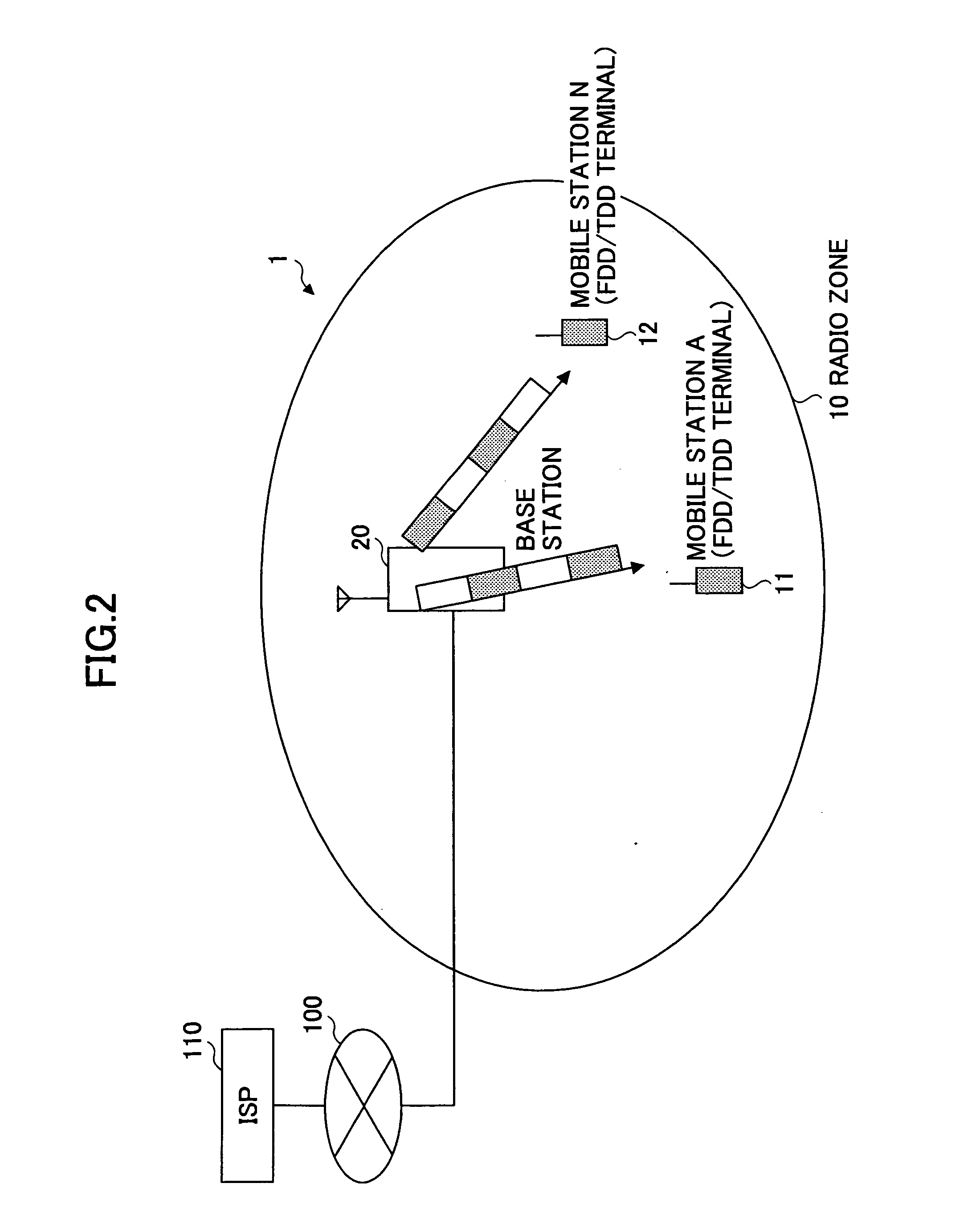Slot allocation apparatus and slot allocation method
a slot allocation and slot technology, applied in the field of slot allocation apparatus and slot allocation method, can solve the problems of affecting the propagation delay, the inability to perform transmission during the reception, and the obstruction of the miniaturization of mobile telephones
- Summary
- Abstract
- Description
- Claims
- Application Information
AI Technical Summary
Benefits of technology
Problems solved by technology
Method used
Image
Examples
first embodiment
[First Embodiment]
[0071] At first, a configuration of a base station to which a slot allocation method based on the FDD / TDD scheme according to the first embodiment of the present invention is applied is explained. FIG. 4 is a function block diagram which shows an example of the configuration of the base station according to the present embodiment.
[0072] In this drawing, the base station 30 includes a buffering section 31 that retrieves information on quality of a communication service a user requires (hereafter, referred as to QoS information) based on header information of the data packet received, and outputs it to scheduling section 32; a scheduling section 32 that determines slot allocation for a downlink (down line) which is a propagation path from a base station to a mobile station and an uplink (up line) which is a propagation path from a mobile station to a base station based on the QoS information of the traffic supplied from the buffering section 31 and information on ch...
second embodiment
[Second Embodiment]
[0087] In the aforementioned embodiment, the base station detects among the uplink / downlink traffic the traffic to which the transmission with the class of the highest priority should be applied, and allocates slots to the detected link on a priority basis; however, the base station according to this embodiment has a function of giving a higher priority on the slot allocation for the downlink in advance.
[0088]FIG. 9 is a flowchart which shows an operation of the base station according to this embodiment.
[0089] In this drawing, at first the base station determines the slot allocation for the downlink of a certain mobile station (for example, the mobile station A) in step S11. After that, in step S12 the mobile station detects, among other mobile stations except the mobile station A, a mobile station for which the uplink slot is not allocated at the transmission timing of the downlink slot for the mobile station A, and allocates the uplink slot for the detected mo...
third embodiment
[Third Embodiment]
[0096] In the first embodiment, the manner in which the base station allocates the slot based on the Qos information is described; however, the base station according to this embodiment has a function of allocating the slots of the uplink and downlink based on propagation path information obtained from the uplink reception section 36 (see FIG. 4).
[0097] Although each mobile station cannot send out a control signal in the uplink during the reception in the downlink, at the timing when no allocation is performed each mobile station transmits propagation path information, such as reception status of the downlink or reception quality of packets, to the base station.
[0098] The uplink reception section 36 of the base station has a function of outputting the propagation path information transmitted as mentioned above to the scheduling section 32. Here, the propagation path information reported to the base station from the mobile stations is described. Propagation path i...
PUM
 Login to View More
Login to View More Abstract
Description
Claims
Application Information
 Login to View More
Login to View More - R&D
- Intellectual Property
- Life Sciences
- Materials
- Tech Scout
- Unparalleled Data Quality
- Higher Quality Content
- 60% Fewer Hallucinations
Browse by: Latest US Patents, China's latest patents, Technical Efficacy Thesaurus, Application Domain, Technology Topic, Popular Technical Reports.
© 2025 PatSnap. All rights reserved.Legal|Privacy policy|Modern Slavery Act Transparency Statement|Sitemap|About US| Contact US: help@patsnap.com



